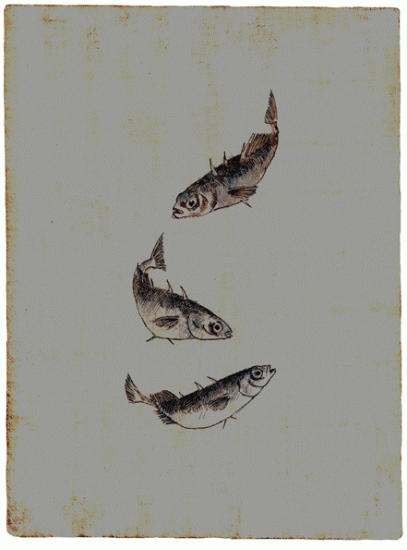words & illustration by Jonathan Newdick.

‘And that, Best Beloved, is the reason why the stickleback hangs in the water with his tail curled to one side.’ Rudyard Kipling might have been moved to devise a whimsical and entertaining reason for this phenomenon but why does the stickleback invariably rest in this position? Probably because he is constantly in readiness to dart away from a predator – the foot on the accelerator as it were.
Looking down from the plank footbridge into the slow, green water you see a group of small brownish fish. ‘Group’ seems a more apposite word than ‘shoal’ which suggests a more purposeful gathering and all facing in the same direction. These fishes are all pointing in different directions like pine needles on the forest floor. And most of them have their tails curled to one side – they must be sticklebacks. Minnows or the young dace would be straight of body and gently moving, while the sticklebacks hang motionless with only the gently fanning pectoral fins to tell us they are alive. But put your net into the water and they are all gone. You do not see them move. They are just gone. That’s all.
The three-spined stickleback, which J. Travis Jenkins also calls Jack sharp, prickleback and sharpling in his classic work of 1925, is common everywhere – in enclosed ponds, running streams and even in brackish and salty lagoons. In Myles Birket Foster’s genre painting Rustic Anglers you can be sure that the catch in the little child’s jam jar will be of sticklebacks.
Standing on my little plank footbridge in spring the group of sticklebacks is confused among the reflections of celandines and the lush young leaves of hemlock water dropwort. These leaves are a beautiful green and look as appetising as a fresh salad in an expensive restaurant yet they are as toxic as anything you will find in the countryside as Keats well knew: ‘My heart aches, and a drowsy numbness pains / My sense, as though of hemlock I had drunk, / Or emptied some dull opiate to the drains / One minute past, and Lethe-wards had sunk:’
Beneath this lush spring canopy of yellows and greens the male stickleback will build his nest of plant matter which is bonded together with a gelatinous secretion from his kidneys . At this time he develops a conspicuous red belly which must help to entice a female to lay her eggs in the nest. Once this is done he will guard the eggs and young until they are ready to leave the nursery after a few weeks.
When the breeding season and the celandines are over, the hemlock beginning to come into flower, the narrow plank bridge will be impassable and the stickleback will return to his life of hanging in the green water, darting from time to time at some unsuspecting daphnia or other tiny organism but mostly he will just hang there, his tail curled to one side.